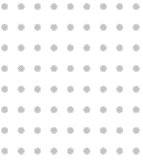Breastfeeding is a life-changing decision for both amma and the little one. But it might not be for everyone, and let’s keep the judgment at bay. You do you! We won’t send the parenting police after you if it’s not your thing.
Some face difficulty breastfeeding or are unable to, or simply choose not to. That’s where formula feeding comes in, offering a convenient and just-as-nutritious alternative. So, don’t let other pesky moms tell you you’re a bad mom for choosing formula.
Feel free to use this blog as your guide into the unchartered territory of formula feeding. Grab a cup of coffee and let’s dive right in!
What is formula milk for baby?
Formula milk, also known as infant formula or baby formula, is a substitute for breast milk that is specifically designed to provide all the necessary nutrients a baby needs to support their growth and development.
Most formulas contain a combination of proteins (usually cow’s milk proteins), carbohydrates (such as lactose or other sweeteners), fats (including essential fatty acids), vitamins, minerals, and additional supplements like iron and prebiotics.
Making the formula
If you immediately thought of Tom, the cat —in his room making potions wearing glasses and gloves and things blowing up and going horribly wrong, we are glad to tell you that’s not how it works. It’s readily available in the market to use without any hassle by simply following a few steps.
Formula milk for babies is available in various types, including powdered, liquid concentrate, and ready-to-use. We’ll be focusing on the powdered variety since it is most widely available, used and preferred by mothers in India. But let’s briefly go over all three types, so you know what’s up.
- Ready-to-Use Formula: A ready-made formula for immediate use without any mixing or thinning down. It comes in pre-sterilized bottles, making it super convenient for travel or when you’re short on time. However, ready-to-use formula is the most expensive option and takes up more storage space.
- Liquid concentrate formula: A concentrated liquid that requires to be thinned with equal parts of water before feeding. It’s less cost-effective than powdered formula and may be bulkier to store.
- Powdered formula: This is the most common type of formula and comes in a powdered form that needs to be mixed with water. It’s cost-effective and easy to store, making it convenient for busy parents.
To make powdered formula, begin by sterilizing all the feeding equipment by boiling them in a pan of water for at least 10 minutes on high heat. Now, check the instructions on the formula packaging to find the correct water-to-powder ratio and boil some filtered, drinking water. When the water is lukewarm and the utensil comfortable to touch, add the required amount of formula powder. Give it a good shake and voila! It’s that easy!
Bottle-Feeding Your Baby
Before you feed the back, squeeze a few drops on your inner wrist to make sure it isn’t too hot for your baby. Go find a cosy spot, get the bottle milk for baby, and share some precious bonding time.
Hold your baby in a semi-upright position, supporting their head and neck. Gently guide the bottle nipple into their mouth and let them suckle at their own pace. Remember, don’t encourage your baby to finish the bottle when they’ve lost interest. All babies are different, each day and feeding is different so just follow their lead when it comes to bottle-feeding.
When feeding newborns, it’s best to feed on demand. Look out for these hunger cues:
- Opening their mouth, licking and smacking their lips
- Increasing physical movement or rooting (moving their mouth, jaw, or head in search of food)
- Bringing their hand to mouth or sucking on things
- Fussiness and crying
Baby Formula Feeding Chart
While it’s crucial to follow your baby’s cues for hunger and fullness, having a baby formula feeding chart as a reference can be immensely helpful. Here’s the average amounts your baby may need based on their age:
|
Age |
Amount per feeding |
Feeding frequency |
|
Newborn (0 to 4 weeks) |
60 to 90 ml |
Once every 3 to 4 hours |
|
1 to 2 months |
60 to 120 ml |
8 to 12 times a day |
|
2 to 4 months |
120 to 180 ml |
6 to 8 times a day |
|
4 to 6 months |
120 to 240ml |
4 to 6 times a day |
|
6 to 9 months |
180 to 240 ml |
4 to 5 times a day |
|
9 to 12 months |
240 ml |
3 to 4 times a day |
These are just general formula feeding guidelines, and some babies may require more formula, and some less depending on their individual needs.
Signs Your Baby’s Getting Enough Formula
It’s important to make sure your baby’s getting enough nutrition in the early days and the first year. Here are some signs that your little one’s getting all the formula they need:
- Happy baby: Your baby’s happy and relaxed after a feeding.
- Steady weight gain: Your baby began to gain weight after their first 10 days and follow a healthy weight gain curve throughout their first year.
- Wet diapers: Your baby has at least 6 to 8 wet diapers per day after the first week.
Now babies are usually good at stopping when they’re content, but bottles can trick them into drinking too much at times. Here are some signs that your baby’s getting too much formula:
- Tummy pain: If your baby lifts up their legs or their tummy seems tense after a feeding, they may be in pain.
- Vomiting: Spitting up is normal, but vomiting after a feeding could be a sign that your baby has had too much.
That wraps everything! Formula feeding is a fantastic option for nourishing and bonding with your baby. By following these guidelines and keeping an eye on your baby’s hunger cues, you’ll become a pro in no time.
We’ll see you soon in another blog. And oh! Don’t forget to read up on when to start giving water to newborns.





